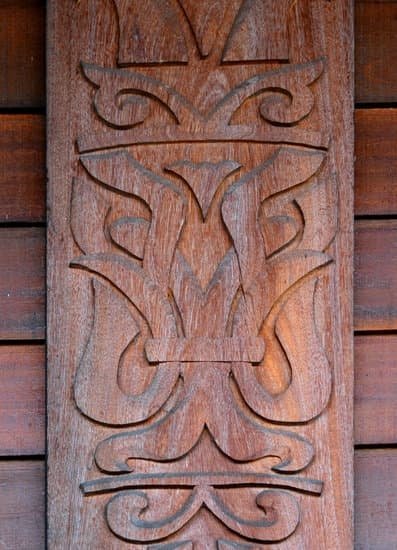Are you a DIY enthusiast looking to add stylish and practical shelving to your home? Look no further than woodworking shelf plans. These plans provide a blueprint for creating custom shelves that perfectly suit your space and style. In this article, we will explore why woodworking shelf plans are essential for DIY enthusiasts, as well as provide tips and inspiration for creating your own unique shelves.
When it comes to woodworking, having the right tools and materials is crucial. We will delve into the basics of woodworking, including the essential tools and materials needed to bring your shelf plans to life. Understanding these fundamentals will ensure that you have everything you need to successfully complete your woodworking project.
In addition to tools and materials, choosing the right wood is also key to the success of your woodworking shelf plans. We will discuss different types of wood, their durability, and aesthetic appeal to help you make an informed decision when selecting the perfect wood for your shelves. Whether you prefer a rustic look with reclaimed wood or a more modern feel with sleek hardwoods, there is a type of wood that suits every taste and style.
The Basics of Woodworking
Woodworking is a popular DIY hobby that allows enthusiasts to create functional and decorative pieces for their homes. One of the essential aspects of woodworking is understanding the different tools and materials required for various projects, including woodworking shelf plans. Whether you are a beginner or a seasoned woodworker, having a good grasp of the basics will enable you to execute your plans with precision and finesse.
Essential Tools for Woodworking
Before embarking on any woodworking project, it’s crucial to familiarize yourself with the basic tools used in this craft. Some essential tools for woodworking shelf plans include a saw (circular saw, table saw, or miter saw), power drill, wood router, clamps, measuring tape, level, and sanding equipment. Each tool serves a specific purpose in cutting, shaping, joining, and finishing the wood.
Understanding Wood Materials
Woodworking involves working with different types of wood, each with its unique characteristics and qualities. From softwoods like pine and cedar to hardwoods like oak and walnut, understanding the properties of different woods will help you choose the right material for your woodworking shelf plans. Consider factors such as durability, grain pattern, color variations, and cost when selecting wood for your project.
Safety Measures When Using Woodworking Tools
In addition to knowing how to use woodworking tools effectively, it’s crucial to prioritize safety when handling these instruments. Always wear protective gear such as goggles and gloves when operating power tools or hand tools. Keep your work area well-lit and organized to prevent accidents or injuries while working on your woodworking shelf plans. Additionally, ensure that all tools are properly maintained and in good working condition before use to avoid mishaps during the construction process.
Choosing the Right Wood
When it comes to creating woodworking shelf plans, choosing the right type of wood is crucial in ensuring the durability and aesthetic appeal of your project. Different types of wood have varying levels of durability, grain patterns, and coloration, making it important to select the best option for your specific needs.
One of the most popular choices for woodworking shelf plans is hardwood, such as oak, cherry, or maple. Hardwood is known for its strength and durability, making it a great choice for shelves that need to support heavy items. Additionally, hardwood has a beautiful grain pattern that can add a touch of elegance to your woodworking project.
On the other hand, softwood like pine or cedar is another viable option for woodworking shelf plans. Softwood is generally more affordable than hardwood and can be easier to work with due to its lighter weight. While not as durable as hardwood, softwood can still be suitable for shelving projects in low-impact areas.
For those seeking a more unique and exotic look for their woodworking shelf plans, consider using specialty woods like mahogany or teak. These woods are prized for their distinct colors and grain patterns, adding a luxurious and one-of-a-kind touch to any shelf design.
| Wood Type | Durability | Aesthetic Appeal |
|---|---|---|
| Hardwood (Oak, Cherry, Maple) | High | Elegant grain patterns |
| Softwood (Pine, Cedar) | Medium | Affordable option with natural charm |
| Specialty Woods (Mahogany, Teak) | High | Unique colors and grain patterns |
Remember that your choice of wood will not only impact the appearance but also the overall strength and longevity of your shelves. Consider these factors carefully when selecting the right wood for your woodworking shelf plans to ensure a successful and visually appealing result.
Design Inspiration
When it comes to creating unique and functional woodworking shelf plans, the design inspiration is key. Whether you are looking to build a simple wall-mounted shelf or a more intricate freestanding bookcase, there are countless creative ideas to consider. Here are some design inspiration ideas to help you create the perfect woodworking shelf plan for your space:
- Geometric Shapes: Consider incorporating geometric shapes such as hexagons, triangles, or diamonds into your woodworking shelf plan. This can add visual interest and make your shelf stand out as a unique piece of furniture.
- Floating Shelves: Floating shelves create a minimalistic and modern look while also maximizing space. These shelves appear to “float” on the wall, giving them a clean and sleek appearance.
- Multi-Functional Shelving: Think about building shelves that serve multiple purposes, such as incorporating hooks for hanging coats or bags, or adding a built-in desk area for added functionality.
By considering these design inspiration ideas and thinking outside the box, you can create woodworking shelf plans that not only serve their purpose but also become an eye-catching addition to your home.
Step-by-Step Guide: Building a Basic Woodworking Shelf Plan
Once you have found the design inspiration for your woodworking shelf plan, it’s time to start building. Follow this step-by-step guide to construct a basic yet functional wood shelf:
- Measure and Cut Your Wood: Start by measuring and cutting your wood pieces according to the dimensions of your desired shelf.
- Assemble the Frame: Use wood glue and screws to assemble the frame of your shelf, ensuring that it is sturdy and level.
- Attach the Shelves: Once the frame is secure, attach the shelves at equal intervals using wood glue and screws.
By following these steps and paying attention to detail, you can build a basic woodworking shelf plan that meets both form and function requirements within your home.
Step-by-Step Guide
Building a basic woodworking shelf plan can be a great starting point for DIY enthusiasts looking to hone their skills in woodworking. With the right tools, materials, and a bit of creativity, you can create functional and aesthetically pleasing shelves for your home. Whether you’re a beginner or have some experience with woodworking, following a step-by-step guide will help you achieve professional-looking results.
To start with, it’s essential to have a clear set of woodworking shelf plans. These plans should include detailed measurements, material requirements, and an outline of the construction process. Many resources online offer free or affordable woodworking shelf plans that you can use as a guide or customize to suit your specific needs.
Once you have your woodworking shelf plans ready, the next step is to gather the necessary tools and materials. Basic tools such as saws, drills, measuring tape, and sandpaper are essential for any woodworking project. Additionally, choosing the right type of wood is crucial for the durability and aesthetic appeal of your shelves. Common choices include pine, oak, maple, and plywood – each with its own unique characteristics and suitability for different types of shelves.
| Woodworking Shelf Plans | Basic Woodworking Tools |
|---|---|
| Adequate measurements | Saws |
| Material requirements | Drills |
| Construction process outline | Measuring tape |
Advanced Techniques
Joinery Techniques
When it comes to woodworking shelf plans, the incorporation of joinery techniques can elevate the overall aesthetic and structural integrity of the project. Joinery is the art of connecting different pieces of wood together to form a strong and seamless bond. One popular joinery technique is dovetail joinery, which involves creating interlocking wedge-shaped joints for added strength and visual appeal.
Other common joinery techniques include mortise and tenon joints, finger joints, and dado joints. It’s essential to understand these techniques and practice them before incorporating them into your woodworking shelf plans.
Decorative Elements
In addition to joinery techniques, adding decorative elements to your woodworking shelf plans can take your project to the next level. Consider incorporating carved details, inlay work, or edge profiles to add a touch of elegance and personalization to your shelves.
These decorative elements not only enhance the visual appeal of the shelves but also showcase your craftsmanship and attention to detail. Whether you prefer a traditional, rustic look or a more modern and sleek design, decorative elements can help achieve the aesthetic you desire for your woodworking shelf plans.
Balancing Form and Function
As you incorporate advanced techniques into your woodworking shelf plans, it’s important to strike a balance between form and function. While decorative elements enhance the visual appeal of the shelves, they should not compromise their functionality.
Ensure that any decorative elements or joinery techniques used do not hinder the practicality of the shelves – they should still serve their primary purpose of providing storage space while adding an artistic touch to your home decor. Always consider how these advanced techniques will contribute to both the appearance and usability of your woodworking shelf plans.
Tips for a Professional Finish
When it comes to creating woodworking shelf plans, achieving a professional finish is essential to showcase the beauty of the wood and ensure the longevity of your creation. Staining, sealing, and polishing are crucial steps in the woodworking process that can elevate the overall look and feel of your shelves. Here are some tips for achieving a professional finish on your woodworking shelves:
- Staining: Choose a stain that complements the type of wood you are using and test it on a small inconspicuous area first to ensure you achieve the desired color. Apply even coats of stain with a brush or cloth, following the direction of the grain to prevent streaking or uneven coloring.
- Sealing: Once the stain has dried completely, it’s important to seal the wood to protect it from moisture, dirt, and wear. Consider using a clear polyurethane or varnish to seal your shelves, applying multiple thin coats for even coverage and allowing each coat to dry before applying the next.
- Polishing: After sealing, consider polishing your woodworking shelves to enhance their natural beauty and add a lustrous finish. Use a fine-grit sandpaper to lightly sand the surface between coats of sealant for a smooth finish. Finally, apply a furniture polish or wax with a soft cloth in circular motions for a glossy sheen.
By following these tips for staining, sealing, and polishing your woodworking shelf plans, you can achieve a professional finish that will make your shelves stand out as beautiful and durable pieces in any room.
Remember that each type of wood may require slightly different techniques for staining, sealing, and polishing. Always consult specific resources or experts regarding individual types of wood to ensure you are using appropriate methods for finishing your woodworking shelves.
Safety First
As DIY enthusiasts embark on their woodworking shelf plans, it is crucial to prioritize safety throughout the entire process. Working with power tools and sharp materials can present potential hazards, making it essential to follow best practices and take necessary precautions.
One of the most important aspects of safety in woodworking is investing in high-quality personal protective equipment (PPE). This includes items such as safety goggles, gloves, and hearing protection. These pieces of equipment are designed to protect you from flying wood chips, splinters, and loud noises that can cause damage to your eyes, hands, and ears.
In addition to wearing PPE, it is vital to maintain a clean and organized workspace. Cluttered work areas can lead to accidents and injuries, so be sure to keep your tools and materials organized and properly stored when not in use. It’s also important to have good lighting in your workspace to ensure that you can see what you are doing clearly.
Furthermore, understanding how each tool operates and adhering to its safety guidelines is imperative. Whether it’s a table saw, drill press, or handheld power tools, familiarize yourself with the manufacturer’s instructions for safe operation. Always use push sticks or blocks when operating a table saw or jointer to keep your hands at a safe distance from the cutting blades. Prioritizing safety will ensure an enjoyable and incident-free experience as you bring your woodworking shelf plans to life.
Conclusion
In conclusion, woodworking shelf plans are an essential tool for DIY enthusiasts looking to create unique and functional shelving units. By understanding the basics of woodworking, choosing the right wood, seeking design inspiration, and following a step-by-step guide, anyone can build a beautiful and practical shelf for their home. Moreover, incorporating advanced techniques such as joinery and decorative elements can elevate the quality and aesthetic appeal of the finished product.
It’s important to remember that safety should always come first when working on woodworking projects. By following best practices and taking necessary precautions, DIY enthusiasts can ensure a successful and injury-free experience. Additionally, staining, sealing, and polishing the finished shelf will provide a professional touch that enhances both its appearance and durability.
So whether you’re a novice or an experienced woodworker, don’t hesitate to get started with woodworking shelf plans. With the right tools, materials, and guidance, you can bring your vision to life and create a piece that adds both beauty and functionality to your living space. So gather your supplies, dust off your tools, and start building – the satisfaction of completing a handmade woodworking project is truly unmatched.
Frequently Asked Questions
Is It Cheaper to Build or Buy a Shelf?
When considering whether it’s cheaper to build or buy a shelf, several factors come into play. If you have the necessary tools and skills to build a shelf yourself, it can often be more cost-effective than purchasing one.
However, if you don’t have the tools or expertise, buying a pre-made shelf might be the more affordable option.
What Is the Best Thickness of Wood for Shelves?
The best thickness of wood for shelves depends on the specific use and weight-bearing requirements. Generally, for standard household shelves, a thickness of 3/4 inch is sufficient to support various items without sagging or bowing. For heavier loads, thicker wood like 1 inch may be more appropriate.
What Is the Best Wood for Built in Shelves?
When choosing the best wood for built-in shelves, it’s important to consider both durability and aesthetic appeal. Hardwoods such as oak, cherry, or maple are popular choices due to their strength and attractive grain patterns. Alternatively, engineered woods like plywood or MDF are also excellent options for built-in shelves due to their stability and affordability.

Hi everyone! I’m a woodworker and blogger, and this is my woodworking blog. In my blog, I share tips and tricks for woodworkers of all skill levels, as well as project ideas that you can try yourself.





